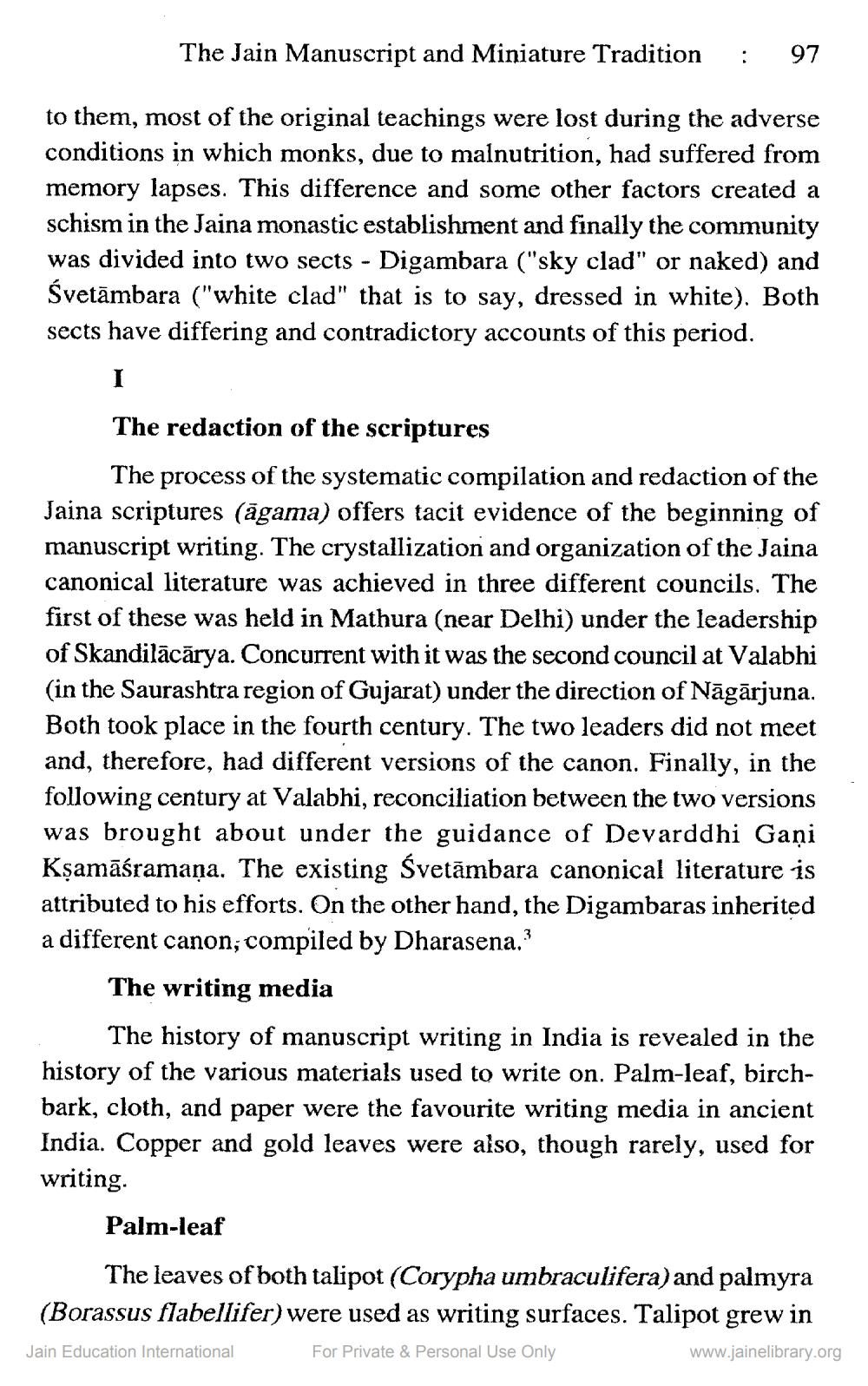________________
The Jain Manuscript and Miniature Tradition
:
97
to them, most of the original teachings were lost during the adverse conditions in which monks, due to malnutrition, had suffered from memory lapses. This difference and some other factors created a schism in the Jaina monastic establishment and finally the community was divided into two sects - Digambara ("sky clad" or naked) and Svetāmbara ("white clad" that is to say, dressed in white). Both sects have differing and contradictory accounts of this period.
The redaction of the scriptures
The process of the systematic compilation and redaction of the Jaina scriptures (āgama) offers tacit evidence of the beginning of manuscript writing. The crystallization and organization of the Jaina canonical literature was achieved in three different councils. The first of these was held in Mathura (near Delhi) under the leadership of Skandilācārya. Concurrent with it was the second council at Valabhi (in the Saurashtra region of Gujarat) under the direction of Nāgārjuna. Both took place in the fourth century. The two leaders did not meet and, therefore, had different versions of the canon. Finally, in the following century at Valabhi, reconciliation between the two versions was brought about under the guidance of Devarddhi Gaņi Kşamāśramaņa. The existing Svetāmbara canonical literature is attributed to his efforts. On the other hand, the Digambaras inherited a different canon, compiled by Dharasena.?
The writing media
The history of manuscript writing in India is revealed in the history of the various materials used to write on. Palm-leaf, birchbark, cloth, and paper were the favourite writing media in ancient India. Copper and gold leaves were also, though rarely, used for writing.
Palm-leaf
The leaves of both talipot (Corypha umbraculifera) and palmyra (Borassus flabellifer) were used as writing surfaces. Talipot grew in Jain Education International For Private & Personal Use Only
www.jainelibrary.org




